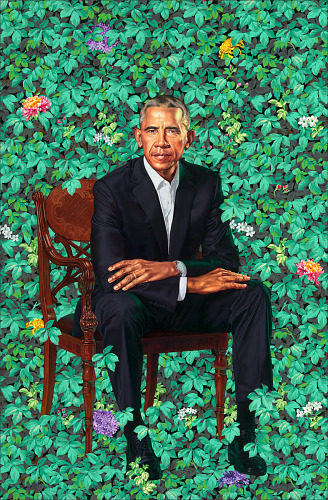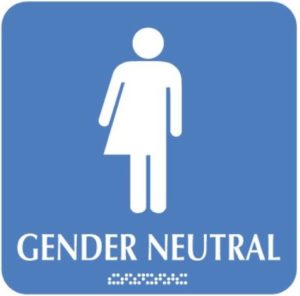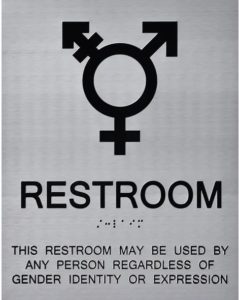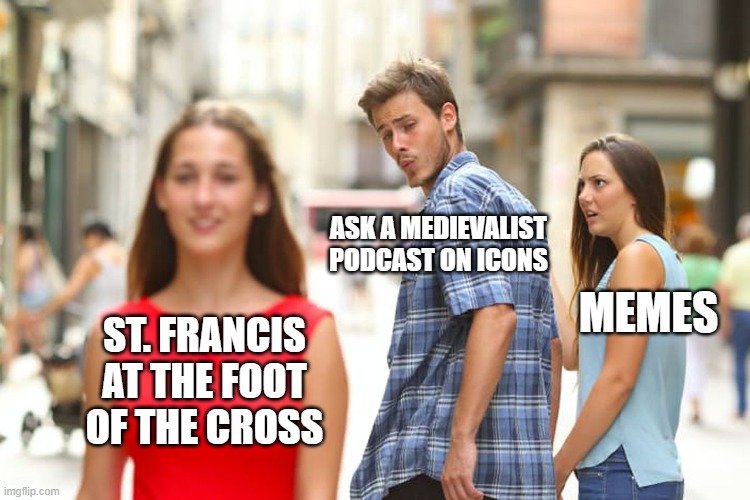Summary
In which we discuss iconography (the study of icons), primarily so we can talk about the protests relating to/attempting to tear down the Robert E. Lee (and other major Confederate) statue(s) in Richmond, VA. But there’s also some good stuff on Medieval iconography, Kehinde Wiley, GB Trudeau, and Beyoncé.
Notes, Corrections, Annotations
1/ For reference, Charlottesville has a population of about 48k people, while Richmond has a population of 227k (similar in size to Madison, actually).
Jesse: True! However, the greater RIchmond metropolitan area actually had 1,263,617 people (in 2016) while the greater Madison metropolitan area had 654,230 (in 2017). The Richmond area is actually pretty big for a city that feels fairly small. Also, UVA’s student population is 21,985, so the university is a very significant presence. Thomas Jefferson founded the University of Virginia (UVA) in 1819, and the school is occasionally called “Mr. Jefferson’s University.”
2/ Maggie Walker. The daughter of a former slave (and Union spy!), she was the first Black woman to charter a bank in the US. She was an advocate for African Americans and women; later, when she became confined to a wheelchair due to medical problems, she became an advocate for the disabled as well. The statue of her was unveiled in July of 2017, just about a month before the Charlottesville protests (which were around August 13, 2017). Here is the statue.
3/ Would the modern US’s relationship with African Americans be significantly different (better) if Lincoln had lived? There’s no easy answer to the question, because Northerners were anti-slavery but also generally anti-Black. Still, Lincoln was a master politician. Also this seems like a great starting point for a steampunk novel for anyone who is way more into historical research than I am. (And, like, I’m half of a podcast about history, so–be really into it.)–Em.
Jesse: Lots of scholars argue about this. The question is, would Reconstruction have continued longer than it did? For example, Mississippi elected two African Americans to the US Senate during Reconstruction–Hiram Rhodes Revels in 1870 and Blanche Bruce in 1875. Imagine if that had continued! Unfortunately, the compromise of 1877 (which made Rutherford B. Hayes president) effectively ended Reconstruction and ushered in the era of Jim Crow. If Lincoln had been president at the beginning of Reconstruction rather than Johnson, would it have made a difference? Would Reconstruction have been harder to end? Would it have become more integral to US politics? Hard to know, but worth considering. Lincoln’s assassination was a terrible tragedy, but we frequently think to ourselves “at least the war was over.” Unfortunately, in many ways the fight for Civil Rights was just hitting its stride, so Lincoln’s assassination may have made a very real, very important difference by removing him from the presidency and installing Andrew Johnson (a Democrat and former slaveholder from Tennessee who did not value the rights of African Americans but did value the rights of (white) Southerners).
4/ The statue was unveiled on May 29, 1890. Interestingly, Lee had a famous horse named Traveller (so famous he merits his own Wikipedia page), who is not depicted in the piece–I assume that at 16 hands, he was felt to be too petite for the size of the sculpture. As someone else who is 16 hands tall, I find this discrimination distressing. Also it seems to speak to a certain changing view of masculinity.
Jesse: Ok, I always just assumed the horse was Traveller (who was undoubtedly a lovely, awesome horse and does not deserve to be condemned alongside Lee!). However, the Wikipedia page for the monument does indeed state that the horse is not Traveller because Traveller did not have the ideal dimensions (from the sculptor’s point of view). This raises a lot of interesting questions about iconography and masculinity that we could have addressed if we’d known!
https://en.wikipedia.org/wiki/Robert_E._Lee_Monument_(Richmond,_Virginia)
5/ [6:25] “The governor has said that the Lee statue should just come down as soon as possible.” Since we recorded this episode, a man from the family that originally donated the land and statue to the city (it was officially annexed in 1892) has sued the city of Richmond and an injunction on the removal was put into place.
Jesse: Jefferson Davis was toppled. The law that went into effect on July 1 was intended to create a process for taking down the statues, but the mayor declared that public safety was at risk (because of people toppling statues). The city of Richmond removed Stonewall Jackson on July 1 and Matthew Fontaine Maury (Confederate Navy) on July 2. The city of Richmond will presumably remove JEB Stuart and Robert E. Lee over the July 4 weekend.
6/ Kehinde Wiley: You know him from this brilliant portrait of Obama:

(Which, honestly, when viewed with the other presidential portraits is even more amazing by contrast.) Here is the statue Jesse is describing–it’s called Rumors of War. The horses are roughly the same size proportionately, although Wiley’s looks more muscular to me. Also, Wiley’s rider and horse are (in my opinion) in a much more dynamic, eye-catching pose. It really is an A+ statue. The Lee (sculpted by Frenchman Antonin Mercié) is big (14 feet tall, plus the pedestal) but not terribly exciting on an artistic level.–Em
Jesse: Rumors of War is truly amazing–good art always looks even better in person, which is absolutely true of this statue. Rumors of War is incredibly dynamic; the African American rider and horse are arrested in the midst of a wonderful prancing motion, with the rider turning in his saddle. The rider is looking back and a little down with an expression of tremendous power, giving viewers the sense that he is vastly superior to whatever he’s looking at in the distance over our heads. In his current location, the rider is moving towards the building that belongs to the Daughters of the Confederacy (but he’s looking away from it with power and disdain). Wiley’s bronze is supposed to critique the statue of JEB Stuart, which is (or hopefully in a few days was) not far away on Monument Avenue. The horse in the Stuart statue has a similar stance, and the positioning of the rider is similar, but Wiley’s bronze is far more interesting and complex (in addition to creating a beautiful social critique).
Em: In theory if you want to view the other works in Wiley’s series Rumors of War, he has them up on his website, but I couldn’t get them to load while I was doing the notes. You could also do a google image search for “Kehinde Wiley Rumors of War” and you’ll see them.
7/ Beyoncé’s “Deja Vu” video premiered in 2006, making it not just pre-Lemonade, but pre-“Single Ladies.” I wouldn’t be shocked to learn that she had some device in her shoes like Michael Jackson used to use for that gravity-defying lean in the “Smooth Criminal” video. It is hard to believe someone wearing heels that high can move like that. Here is a live version where the Josephine Baker reference is more explicit.
I encourage you to check out Josephine Baker’s Wikipedia page, by the way. She was an incredible person.
8/ Scott McCloud, Understanding Comics. As a webcomics writer artist person (albeit one who has never attracted any notice), I can’t deny that he has been a real force for the promotion of webcomics, which are definitely far superior to regular newspaper print comics in many ways. However, I’m struck that all the blurbs on his book are by men (in fact, all the blurbs on all his books). (Okay anyway this isn’t the place for me to give a ted talk on the riot grrrl movement. Sorry. Carry on.–Em)
9/ GB Trudeau icons of note: Dan Quayle was a feather. Clinton was a waffle. Newt Gingrich was a bomb. George W. Bush was an asterisk in a cowboy hat (and, after the Iraq War pt II began, the helmet of a Roman legionnaire–and I swear that comic is hilarious if you were alive in early 2001). I don’t think he ever gave Obama an icon. For good measure, an old Trump one.
[Jesse: Obama never got an icon, but Trudeau did write a panel explaining why and discussing the problems with icons and iconography as agents of simplification, which is both awesome and pertinent.]
Em: I also learned 1970s/80s history from Doonesbury initially.
For the record, Trudeau was also one of the first to draw George W. Bush, because they were at Yale together. (GBT, shockingly, did not have a high opinion of GWB). It’s weird now that everyone seems to have collectively forgotten how terrible GWB was. Public opinion is weird. Never forget! He sucked. [Yes! But we can’t remember that till we get rid of our current president, who might knock Andrew Johnson off the worst-president-ever pedestal.–Jesse]
10/ Trump: The Game shockingly does not have a high rating on the Geek.
11/ The “Trump l’oeil” comic. Looks like it was published in July 1989.
12/ Kehinde Wiley’s website has a lot more about his history as a painter, how he finds his models, his sources of inspiration, and of course you can view his actual paintings.
13/ [22:40] The Japanese guy painted in Western style in 1615 that Em is describing is this guy, Hasekura Tsunenaga, and you can view the portrait on his Wikipedia page there, which I strongly suggest you do.
14/ I’ll say that now, after having spent some time in Asia, if I see someone from that cultural context wearing a swastika, I don’t think too much about it. If you’re dressing like Ed Norton in American History X and wearing a swastika, I will probably give you the old side-eye.–Em [Same.–Jesse]
15/ A whole thread of Statue of Liberty knee/neck pictures.
Jesse: I also love this use of iconography in Ester Hernández’s Libertad.
16/ This is the Arthur Ashe statue from the back.
Jesse: Poe was born in Boston, but as a toddler he was orphaned and taken in by the Allan family in Richmond. Poe returned to Richmond throughout his life (including marrying his wife Virginia in Richmond).
For more on Kara Walker, check out this site, and this one, and see note 24 below.
17/ Jesse: Bathroom signs! Here’s the normative signage (Source):

The braille is inclusive, but the sign says “all gender” and yet defines two genders (Source):

Here’s the supposedly gender neutral figure with the weird half dress (Source):

Here’s the gender inclusive design using gendered symbols (which still aren’t gender neutral or fully inclusive) (Source):

Trying really hard (Source):

Getting there! But still tying gender to physical secondary sex traits (Source):

Was that so hard? (Source, Source 2):


I have to admit I am surprised at “picture of a toilet” only because Americans (and the British, and everyone) tend to be very euphemistic about bathroom-related things (e.g., the word “bathroom” is a euphemism, as are “powder room,” “restroom,” “facilities,” “en suite,” “the head,” “ladies’ room,” “water closet,” as well as “toilet,” which comes from the French “toilette,” which denotes (most notably) the act of getting ready/washing oneself, and in the US came to also refer to the room). But, on the contrary, a picture of a toilet is not a euphemism. It very directly says, “If you need this, go here.” I think the idea of gender-segregated restrooms grew out of the Victorian idea of having ladies-only spaces within public facilities–so a train station might have had a women’s lounge or women’s waiting room. This wouldn’t have been related to bathrooms because there weren’t public toilet facilities yet–they just thought that women needed a space to themselves when out in public. Typically with a sofa, I guess? Which is why fancy bathrooms still have a little entry area with a sofa and such. Anyway, so when indoor/public toilets did become a thing, designers started by attaching them to these women-only areas. And now we have gender-segregated restrooms.–Em [NB, a lot of this analysis comes from QI, season L, ep. 3, but I can’t find the clip on YouTube anymore.]
Jesse: The thing is, women definitely do need women-only spaces. However, these spaces do not have to be bathrooms (which everyone uses, after all!). There used to be many, many male-only spaces, and there still are because of sexism (if there’s one woman at a company, it’s basically a male-only space). The idea that bathrooms have to be gender-segregated is also sexist, based on the idea that women need to be protected (as though men don’t attack women anyway, even in bathrooms?Trans women are particularly susceptible to violence in restrooms when they are forced into male restrooms). Gender-segregation in bathrooms is also based on shame (which is very Puritan and Victorian). No one should be anywhere near someone of the “opposite sex” when shamefully using their genitalia to excrete waste!!!! Ahhhhhh!!!! Studies have actually shown that gender neutral restrooms at large venues would decrease the wait time for women. Also, the fact that male and female bathrooms at large venues have frequently been the same size is one of the reasons that women have such long wait times–the same space that fits a lot of urinals in the men’s bathroom only fits a couple toilets in the women’s bathroom, so the construction of bathrooms is always already sexist. Changing this legally in building codes is known as potty-parity, which is *not* simply a matter of ratios (i.e., twice as many toilets in the women’s bathroom as the men’s bathroom). Here is my favorite article on the subject.
The point now, of course, is that using bathrooms to force people to adhere to a gender binary is a way of weaponizing sexism. Sexism has always been violent–a way to shame and gaslight people (frequently but by no means exclusively women) into “knowing their place.” Modern bathroom construction coupled with puritanical cultural shame makes people feel vulnerable when they are using the bathroom. The modern debate over gender neutral bathrooms combines this vulnerability with sexism to gaslight the public into turning against gender neutral bathrooms, thereby harming trans people generally and trans women in particular. The article linked above comments that gender neutral bathrooms are actually safer–especially for trans women and trans women of color, who suffer most bathroom-based violence. The violence against trans women in this so-called debate is truly horrifying. The attempt to exclude trans women from female-only spaces (including but not limited to gender-segregated bathrooms) by labeling them as dangerous when trans women are actually among the minority groups most susceptible to violence is an act of evil, and those who perpetrate it are unequivocally sexist. (I’m looking at you, TERFs who think you are feminists. TERF stands for Trans-Exclusionary Radical Feminist, but there’s nothing radical or feminist about them.)
Em: While we’re writing our wishes for the transformation of public bathrooms, could we also just install changing tables in all of them? Here in WI, the law I think requires that if you have one in your women’s room, you have to have one in your men’s room… but there are too many places that don’t have one at all.
18/ “In ancient China…” Okay, I shouldn’t make sweeping statements like this, because 1/ what exactly is “ancient” here, and 2/ China is really big and not homogeneous, and of course 3/ people wear clothes for different purposes and occasions–even today, we couldn’t look only at what a woman might wear to dig in the garden and extrapolate to what she would wear to go to the opera. There were definitely women’s clothes in China during different periods that would have read as trousers to Westerners, and men’s clothing that would have looked like a robe or dress. If you’re interested, Wikipedia has a page with some good paintings.–Em
19/ Suzan-Lori Parks, Death of the Last Black Man in the Whole Entire World.
20/ Buster Keaton being iconic. Chaplin being iconic.
I have read conflicting arguments about the mustache–there’s not a ton of evidence either way, although we do know Hitler was a Chaplin fan. Chaplin had adopted the mustache style around 1914, while Hitler didn’t adopt it until 1919 or so, so it’s definitely possible that the two are connected. Chaplin of course leveraged this similarity in the other direction when he made The Great Dictator.
The entire dance scene is here, in case you haven’t seen it already.
21/ The 1968 Olympics Black Power Salute. The USOPC learned nothing from history and went on to disqualify two men in 1972 and, in 2019, put Olympian Gwen Berry (who holds the #5 spot on the list of all-time hammer throws) on probation for 12 months and reprimanded her for raising her fist on the podium at the Pan-American Games. Ironically, the USOPC also tweeted support for Black rights (as of June 9, 2020, they may be changing their tune, but I think I’ll believe it when I see it). You can read Ms. Berry’s response here.
22/ Here’s a video explaining the Coltrane changes. Then go listen to Giant Steps, you’ll hear them over and over once you know what you’re listening for. And then go listen to something by Alice Coltrane–she’s super cool.
23/ Dion Boucicault, The Octoroon. It looks like the whole thing might be up on Project Gutenberg if you really want to read it. Brandon Jacobs-Jenkins, An Octoroon. The play contains a lot of cross-racial performing, including a Black actor (playing the author) wearing whiteface. “Brechtian” here means he breaks the fourth wall a lot. [Yes, Brechtian is NOT realism! The audience is supposed to be intellectually involved but not emotionally involved. Brecht thought that if audiences were emotionally involved, leading to catharsis, then they would just feel closure and go home without a second thought. Intellectual involvement meant that the audience would continue to think about the issues and critique them after the play was over. He called this alienation or distancing–Verfremdungseffekt.–Jesse]
24/ Kara Walker, A Subtlety. Somewhat unusually, The New Yorker wrote about it too. Also see note 16 above.
25/ Interestingly, since we recorded this, Mississippi has started the process to remove the Confederate battle flag from their state flag. [Yes–it’s gone!! I can’t believe I lived to see the day.–Jesse]
Jesse: For those who are interested in the letter that the main creator of the Confederate battle flag (William Porcher Miles) wrote to General Beauregard in 1861, describing his reasoning for the design, you can see the letter here. Miles says that the St Andrew cross “avoided the religious objection about the cross (from the Jews and many Protestant sects), because it did not stand out so conspicuously as if the cross had been placed upright.” Miles also comments that “in the form I proposed, the cross was more heraldic than ecclesiastical, it being the ‘saltire’ of heraldry, and significant of strength and progress (from the Latin salto, to leap).” There are two main things I’d like to comment on: 1) wouldn’t modern white supremacists be amazed to find out that Jews and Protestants were lumped together as people the Confederacy didn’t want to offend, and 2) the fact that Miles says the cross is “more heraldic than ecclesiastical” does not mean the cross is not at all ecclesiastical. There are some “fact checks” on the internet that suggest this phrase means that the cross had no religious symbolism, which is nonsense. Icons don’t shed meanings that easily, and in a Christian country, a cross cannot be without religious symbolism.
26/ This photo (and accompanying thread) is basically what I’m talking about, although it is from considerably later than when I first heard about this. ManWoman was one of the primary figures behind the “Gentle Swastika” movement (he seems to have died). It’s worth something that after reading this obit, I don’t feel like his advocacy for the swastika was necessarily the most noteworthy thing about him. [Ok, I gotta say that despite my vehemence in our discussion I kinda feel that if everyone wore shirts like the one in the yahoo link (the obit), they might manage to redeem the swastika in Judeo/Christian communities. I am really feeling that shirt. If readers haven’t clicked on the yahoo link, please do. Also, Em is right–this person was extremely interesting in many ways.–Jesse]
27/ Birth of Islam: 622 CE. Schism between Eastern and Western Churches: 1054 CE. By the way, there’s a wonderful Museum of Islamic Art in Kuala Lumpur, Malaysia, that I heartily recommend if international travel ever becomes a thing again or if you just happen to be living in the area and were unaware. It walks through many of the historical questions about representation in Islamic art, and also has some amazing examples of calligraphy. The article on the Bamiyan Buddhas is: Finbarr Barry Flood, “Between Cult and Culture: Bamiyan, Islamic Iconoclasm, and the Museum,” The Art Bulletin, vol. 84, no. 4 (Dec. 2002), pp. 641-659, pdf link. This is a rare article in that it really made me see the entire event much differently than I initially did, while also throwing light on a topic (Islamic Iconoclasm) that is much, much more complex than the West usually gives it credit for being. [Great quote from the article: “[T]he eventual transport of Western journalists to the site to record the void left by the Buddhas’ destruction…suggests that the intended audience for this communiqué was neither divine nor local but global: for all its recidivist rhetoric, this was a performance designed for the age of the Internet. One can make a good case that what was at stake here was not the literal worship of religious idols but their veneration as cultural icons” (651).–Jesse]
Jesse: The final schism occurs in 1054, but the split began much sooner. The first iconoclastic movement in the Byzantine church took place in the eighth century CE.
28/ The Time magazine cover from that week. Art by Titus Kaphar.
29/ Buddha calling the earth to witness. Apsara dancing figures. The Ramayana’s major characters include Rama, Sita, Ravana, and Hanuman (you can hear my brain panicking as I think I only know the Thai names for some of the characters, e.g. Thotsakan, who in Hindi is Ravana). Here’s some info about the Ramakien, which is the Thai version of the Ramayana. In a very different world where I got a Ph.D., this would have been a potential topic for me.
Jesse: For iconic gestures in the classical Indian dance form of Bharatanatyam (which frequently depicts stories from Mahabharata and the Ramayana), check out this and this!
30/ Christus Triumphans (Christ triumphant)
Christus Patiens (Christ suffering)
31/ Sara Lipton, Dark Mirror: The Medieval Origins of Anti-Jewish Iconography, Metropolitan, 2014. Link.
32/ Bernward of Hildeshiem (c.960-1022)
33/ Like a lot of my life, the story of asking the old lady about the tau is really a warning about the limits of a liberal education. On the other hand, if you have some background in a Romance language and want to learn enough Italian to be dangerous, I can recommend the Michel Thomas Method for that.–Em [For the rose bush story, see the third paragraph here. Also, St Francis presumably thought (perhaps he heard Pope Innocent III say) that the tau was the shape of the cross on which Christ was crucified.–Jesse]
34/ Arma christi. See also episodes 5 note 24 and episode 7 note 9 (actually our discussion at that point).
35/ Chartres Cathedral window. Chartres Cathedral is important because it contains some of the oldest stained glass windows that still have their original glass in them. [For more, see my comment in Episode 8, note 29.–Jesse]
Jesse: My discussion on St Francis in place of the Magdalene (using her iconography) comes from Jansen’s The Making of the Magdalene, pp 89-99.
36/ [1:07:50] Em: “I feel like we see this all the time in… modern cartoons.” Yeah, so we missed a really obvious, perhaps the most obvious, example of this–the meme.

37/ St Barbara with her tower and a martyr’s palm (she was martyred).
Apollonia with pliers and a tooth
Many, many pictures of St Lawrence. In some he’s on the grill (gridiron), and in some he’s carrying it or it’s nearby. Can you spot the grill in every picture?
Famous St Sebastian by Montegna (1480)
Several wonderful St George’s with dragons
Lots of St Michael fighting the devil (who appears as a dragon). You can tell it’s not St George, because St Michael has wings (he’s an archangel).
St Jerome and his lion (I think the lion also has a halo). Cute lion.
Tiny lion (yeah that guy is like the size of my cat.–Em)
38/ Spike Lee, Bamboozled, 2000. It doesn’t have a high rating on IMDB, but there is something very early 2000s about the “do something extremely offensive and then claim it’s satire” attitude that it both exhibits and skewers. [Bamboozled is a pretty brilliant film, and it definitely skewers that attitude of “be offensive and claim it’s a satire.” I frequently teach it in class. I imagine the low rating comes from people who were offended–possibly liberal white people who thought it was making fun of them? It was, but not only them.–Jesse]
39/ Jewish hats, known in German as Judenhut. The hat is still pictured on the coat of arms of the town of Judenberg, Austria.
40/ What Greek statues actually looked like. Also contains the Trojan archer statue Jesse talks about at 1:18:xx or so. Relevant New Yorker article. Also this video.
Podcast: Play in new window | Download

